Saturday, January 31, 2009
posted by Steve Tompkins
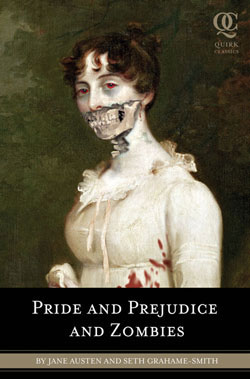
Now I know why I’ve been boycotting Jane Austen for decades; something was missing:
Pride and Prejudice and Zombies features the original text of Jane Austen’s beloved novel with all-new scenes of bone-crunching zombie action. As our story opens, a mysterious plague has fallen upon the quiet English village of Meryton — and the dead are returning to life! Feisty heroine Elizabeth Bennet is determined to wipe out the zombie menace, but she’s soon distracted by the arrival of the haughty and arrogant Mr. Darcy. What ensues is a delightful comedy of manners with plenty of civilized sparring between the two young lovers — and even more violent sparring on the blood-soaked battlefield as Elizabeth wages war against hordes of flesh-eating undead. Complete with 20 illustrations in the style of C. E. Brock (the original illustrator of Pride and Prejudice), this insanely funny expanded edition will introduce Jane Austen’s classic novel to new legions of fans.
Jane Austen is the author of Sense and Sensibility, Persuasion, Mansfield Park, and other masterpieces of English literature.
Seth Grahame-Smith is the author of How to Survive a Horror Movie and The Big Book of Porn. He lives in Los Angeles.
Hope Keira Knightley can clear her schedule…
Thursday, January 29, 2009
posted by Steve Tompkins

Kibbles ‘n’ bits, quibbles and snits this morning, beginning with the Dark Party Review site’s chat with Joakim Zetterberg of Paradox Entertainment. It is soon apparent that Howardian English is not Mr. Zetterberg’s first language, as he describes Conan as “strong as an oxe [sic], yet quick as a panther.” Things really fall off a Cimmerian cliff when he’s asked to debunk “the single biggest misconception” about the character:
While stuck with the epithet “Barbarian” I find him being far from it. Yes, he beats up quite a lot of people but we all know they deserve it. He has a very straight-forward moral code which is easy to understand. He does what he has to do to survive which is more or less a combination of common sense and taking matters into his own hands. He only makes a couple of moral sidesteps with today’s standards, like when he needs money for food. But barbarian, nope.
Zetterberg might merit the benefit of the doubt here –he’s presumably trying to banish the stereotype of the monosyllabic-and-Germanically-accented fur jockstrapper — but as gormless as their efforts were, even L. Sprague de Camp and Lin Carter never decoupled Conan from that conceptual be-all and end-all for REH the barbarian. “He beats up quite a lot of people” and the rest of the answer really suggest some sort of caped crusader. Please stop, or at least coach, this man before he’s interviewed again.
(Continue reading this post)
Saturday, January 24, 2009
posted by Steve Tompkins

. . .the house of life was riven asunder and the human trinity dissolved, and the worm which never dies, that which lies sleeping within us all, was made tangible and an external thing, and clothed with a garment of flesh.
Arthur Machen, The Three Impostors
Within the overall gift-that-keeps-on-giving jamboree of The Collected Letters of Robert E. Howard, for those of us who consider “Worms of the Earth” the greatest story this great writer ever told, a comment in a November 1932 letter to Tevis Clyde Smith is more precious than mithril or orichalchum: “The readers took well to my ‘Worms of the Earth’ story. I didn’t know how they’d like the copulation touch.”
I’m beyond baffled that not one of the few Howardists who had access to all-or-most of his letters has ever quoted this; we have so little on the subject of “Worms” from its author, really just the mea culpa to H. P. Lovecraft about having misspelled (or Celticized) “Eboracum” as “Ebbracum” and the well-known, Howard-as-his-own-best-critic insight that “Worms” was the only time he looked through Pictish eyes and spoke with a Pictish tongue. Much more is going on in his “copulation touch,” the night Bran Mak Morn spends with Atla the witch-woman, than Romanophobic politics making for strange bedfellows. The sex isn’t just sex; it’s transgressive sex; Howard’s hero demeans himself en route to damning himself.
(Continue reading this post)
Wednesday, January 21, 2009
posted by Steve Tompkins

With luck a couple of Edgar Allan Poe straggler-items won’t seem excessive. The slideshow of Poe manuscripts and letters at the Paper Cuts blog of the New York Times is not to be missed, and be sure to click on the link to a PDF of “What Literature Owes to Edgar Allan Poe,” a rewarding trip in the wayback machine to the mindset of 1909 as the newspaper acknowledges Poe’s Centenary. Where we might expected overstuffed prose, a stylistic portliness suggestive of the about-to-be-inaugurated William Howard Taft, the NYT‘s Percival Pollard is gratifyingly lively: “Halls of fame are largely built by press agents and by prejudice. ” Of the post-Griswoldian EAP-bashers he says “[Poe] does not seem to have been much of an equestrian, or I am sure they would have said he was a horse thief.” The ink-stained tide is clearly turning in Poe’s favor; Pollard sees the animus of one region in particular as being washed away Howard-style by an influx of newer barbarians: “The New Englanders gave us sneers about Poe, and they themselves are now merely a convention that will die when the last New Englander has disappeared before the Celt and the Calabrian.” He does concede that “A halo of inebriety all too often encircles [Poe’s] head,” but then that’s also true of an Ard Righ or three in Howard Studies…
Anyone who has watched one or more seasons of HBO’s The Wire will recall that the West Baltimore corner boys, when they don’t call out “5-0! 5-0!” whenever the cops roll up on them, sometimes refer to “Po-po” instead. Obviously an unaffectionate diminutive of police, but it’s fun to pretend our Eminent Baltimorean is being commemorated.
(Continue reading this post)
Sunday, January 18, 2009
posted by Steve Tompkins
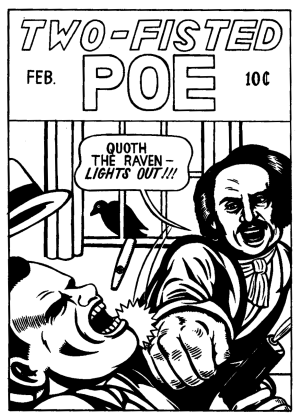
Monday, January 19, 2009 is the 200th birthday of America’s first-ever genre grandmaster, the writer described by Vincent Starrett as “a morose young man, stricken with poverty and genius.” Abraham Lincoln would follow Edgar Allan Poe into the world less than a month later (February 12, 1809), a fact that by 1860 must have had Poe draining several casks of Amontillado in the afterlife. And were his carry-me-back-to-old-Virginny spirit somehow to learn that he was sharing his special 2009 date with not only the Martin Luther King, Jr. holiday but also the eve of Barack Obama’s inauguration — well, the kindest thing might be for him to ascribe the double affront to delirium tremens so severe as to continue bedevilling even ectoplasm.
Back in January of 1809, were his last several weeks in utero uncomfortably reminiscent of being buried alive for our feted and fated fetus? When Eliza Poe’s contractions bore down and became task-oriented, did he experience birth as a just-in-time rescue-by-exhumation? Yes, I’m turning Poe into a Poe character with such questions, but that’s been going on since his own lifetime. As Leslie Fiedler describes the syndrome in Love and Death in the American Novel
Yet Poe produced, after all, one completely achieved work of art in his writing career, a character who belonged specifically to none of his stories though he is, in part, the creation of all of them — a composite of Julius Rodman, Gordon Pym, William Wilson, Roderick Usher, and all the other pale, tormented failures at aggression, exploration, and love, who are haunted, buried alive, or clasped the arms of corpses. That character, who is, of course, Edgar Allan Poe. . .Poe not only wrote but lived.
(Continue reading this post)
Sunday, January 18, 2009
posted by Leo Grin

At long last, the revised third Imaro novel has hit the mean streets, courtesy of Brother Uraeus’ Sword & Soul Media. This continues where Nightshade Books left off after they re-released Imaro (2006) and The Quest for Cush (2007), saving both titles from several decades of being trapped in publishing limbo. With The Trail of Bohu finally out, all three of the original Imaro novels published during the 1980s are back in print, each fully updated and ready to lure a new generation of readers into Saunders’ beguiling vision of a mystical, ancient Africa filled with heaping portions of Sword-and-Sorcery, captivating lost cultures, and above all the potent aroma of living myth. Cover artist Mshindo Kuumba has done another bang-up job after his standout work on Dossouye (2008), capturing the essential appeal of the series with an image both primitive and modern, familiar and exotic.
Now that Imaro 1, 2, and 3 are once again available, Charles is set to get to work on the fourth and fifth installments in the series, neither of which have seen print before. He hopes to get them both out by the end of the year, concluding the saga that he began as a young fan in the 1970s, getting his first stories published in fanzines and short fiction markets that paid in contributor’s copies. It’s been a hell of a long road, but I think that time will remember Charles R. Saunders as a pioneer in his field that blazed trails through some very lonely and treacherous literary jungles and savannas, paving the way for black fantasy writers yet unborn. It’s why I published Steve Tompkins’ long interview with Saunders in The Cimmerian V4n5 (October 2007), one that ultimately was as much about Robert E. Howard and the subgenre he created as it was about Saunders and his career. There’s history being made here, and it behooves us to recognize it.
After Imaro, I suppose Charles might continue with the adventures of Dossouye in another book, or perhaps go back to working on Abengoni, his projected multi-volume fantasy epic of Africans and Celts that he’s described as his own Lord of the Rings. But I hope that somewhere in the middle of all that work he finds time to update and republish his 1990 treatise on the sweet science, Sweat and Soul: The Saga of Black Boxing From the Halifax Forum to Caesars Palace. It’s been sold out and virtually impossible to find for many, many years now, and sounds interesting as hell.
Wednesday, January 14, 2009
posted by Steve Tompkins
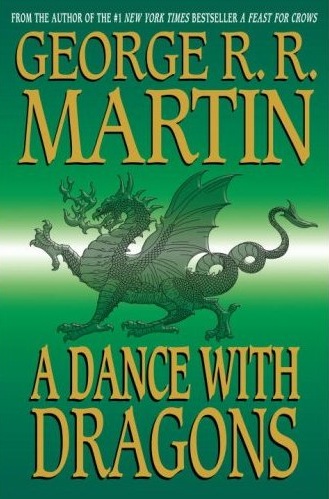
What to say about 2008, other than Good riddance? Vaporization of net worth threatened to translate into vaporization of self-worth; deregulation was too often outed as dereliction, and the magic of the marketplace became necromantic at best. Passing from a macroeconomic to a blog-specific perspective, with legacy-furtherers like Rusty Burke, [redacted], Greg Staples, Fabrice Tortey, and Grin of the TC Rifles acting on his behalf, Robert E. Howard lost no momentum in 2008, give or take an un-supreme moment here and a bitter tree there. Vampires, though, they arguably had an even worse year than investment bankers, as Stephenie Meyer’s fantasies, emo enough to require Sensodyne for their incisors, soulfully short-leashed themselves on the big screen (in the unlikely event that I’m appointed czar-in-charge-of-confiscatory-policy, my first move will be to introduce a punitive tax on typos-turned-vanity-spellings like “Stephenie” and “Britney”. Joe Abercrombie’s Last Argument of Kings, Richard Morgan’s The Steel Remains, and Matthew Woodring Stover’s Caine Black Knife reveled in takes on sword-and-sorcery so noir-ish and non-wish-fulfilling as to be best read through night-vision goggles.
2008 was also yet another year in which George R. R. Martin’s A Dance with Dragons remained unfinished and unpublished — perhaps I should create a new category, “No News and Non-Events,” for this post. The persistence of this oh-so-watched-pot in refusing to boil even came to the attention of The Onion:
Technically, fans have been waiting for the “fourth” book, A Dance With Dragons, since shortly after the third installment came out in 2000 — Martin spent five years working on it, then announced that it was too long, and his publishers were splitting it in two for publication. In 2005, he published half of it as A Feast For Crows. By that time, the series had built a sizeable, rabid fan base, and the book went straight to the top of the New York Times bestseller list. But readers still set the Internet afire, bitching about Feast‘s focus on minor and new characters, and the way it left the biggest fan-favorite characters and the key plotlines for what’s now supposedly going to be the fifth book. At the time, Martin said Dance was largely completed and would come out shortly, but three years later, he’s still writing it, and he’s become noticeably surly about questions regarding the book — and about the way his publishers keep optimistically announcing release dates even though the book still isn’t done.
(Continue reading this post)
Saturday, January 10, 2009
posted by Leo Grin

C’mon…you know you want to click.
Wednesday, January 7, 2009
posted by Steve Tompkins
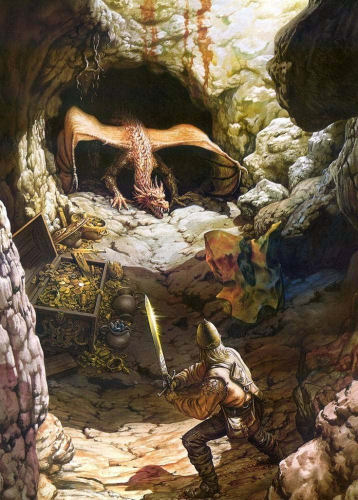
In Surprised By Joy, C. S. Lewis recalled undergoing an epiphany upon reading the words “Balder the Beautiful/Is dead, is dead!” in one of Henry Wadsworth Longfellow’s Norseified poems. “Uplifted into huge regions of northern sky, I desired with almost sickening intensity something never to be described (except that it is cold, spacious, severe, pale, and remote).” This morning Cimmerian Central has been similarly uplifted, thanks to Bookseller.com:
HarperCollins is to publish a new book by the late Lord of the Rings author J R R Tolkien. The Legend of Sigurd and Gudrún, edited and introduced by Tolkien’s son Christopher, will be published in hardback in May 2009.
The previously unpublished work was written while Tolkien was professor of Anglo-Saxon at Oxford University during the 1920s and ’30s, before he wrote The Hobbit and The Lord of the Rings. The publication will make available for the first time Tolkien’s extensive retelling in English narrative verse of the epic Norse tales of Sigurd the Völsung and the Fall of the Niflungs.
Christopher Tolkien edited Tolkien’s most recent title The Children of Húrin in 2007.
Further details about the contents of the book will be revealed closer to publication.
(Continue reading this post)
Monday, January 5, 2009
posted by Steve Tompkins
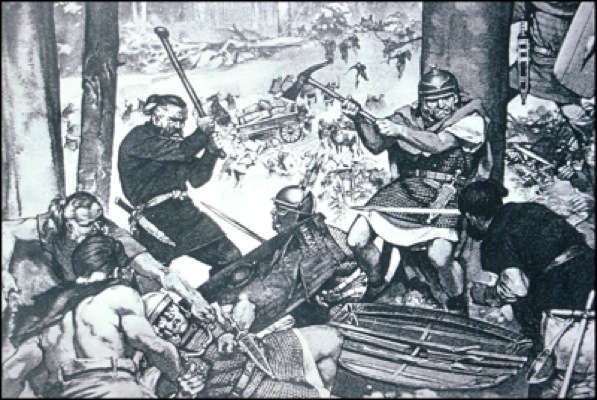
From the mists of Germania come slightly tardy tidings of a battle beyond the imperial frontier:
We have to write our history books new, because what we thought was that the activities of the Romans ended at nine or 10 (years) after Christ,” said Lutz Stratmann, science minister for the German state of Lower Saxony. “Now we know that it must be 200 or 250 after that.”
For weeks, archeologist Petra Loenne and her team have been searching this area with metal detectors, pulling hundreds of ancient Roman weapons out of the ground. They paint a picture of a highly organized, technologically superior Roman army beset by Germanic tribes in a forest about 80 km (50 miles) south of the modern city of Hanover.
The hillside battlefield was discovered by relic-hunters illegally searching for souvenirs of more recent wars near the town of Kalefeld-Oldenrode. One of them brought some of the items he found to Loenne, who works for the local government.
The artifacts are so well preserved that the scientists can already retrace some of the battle lines.
(Continue reading this post)














